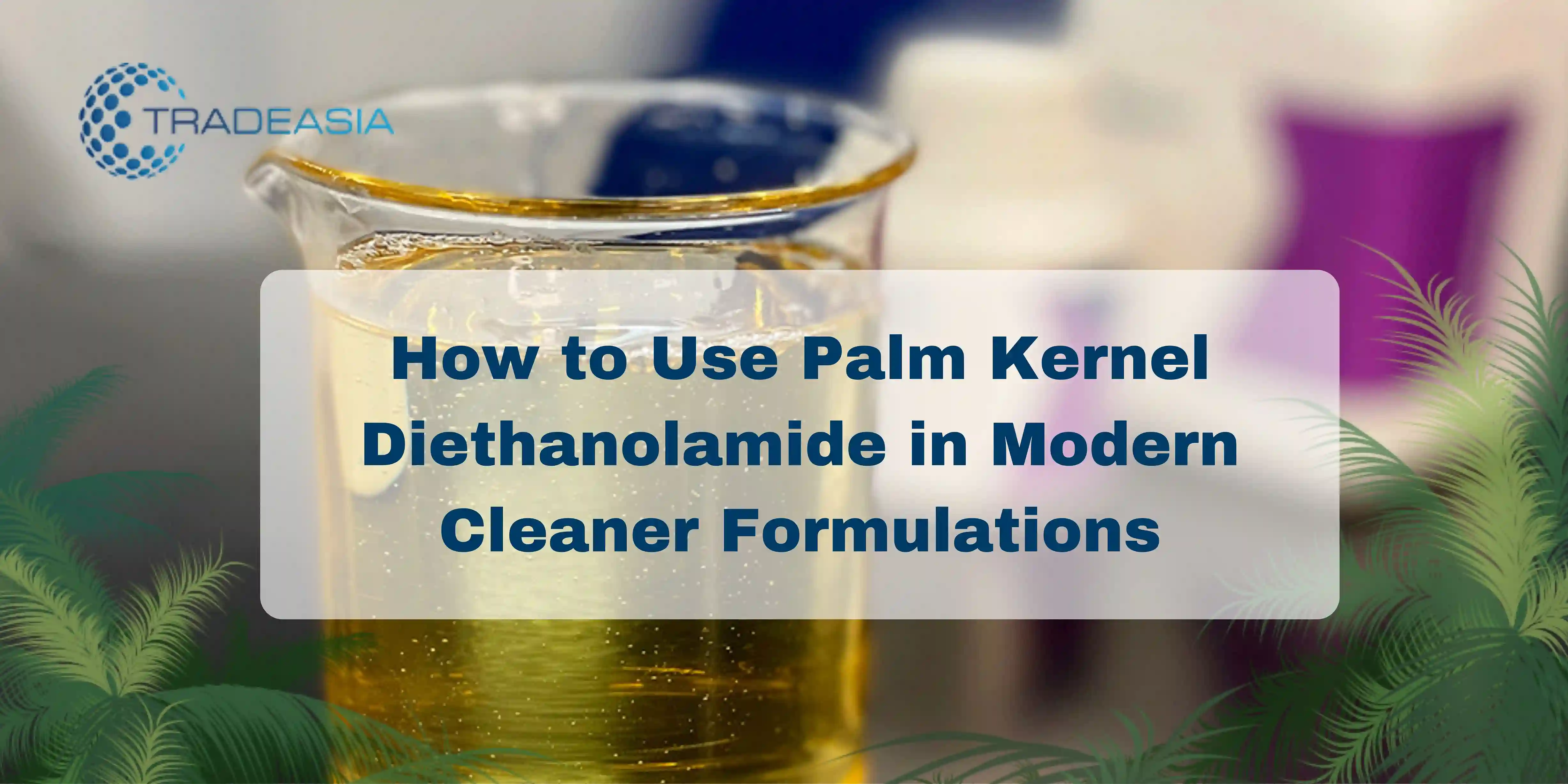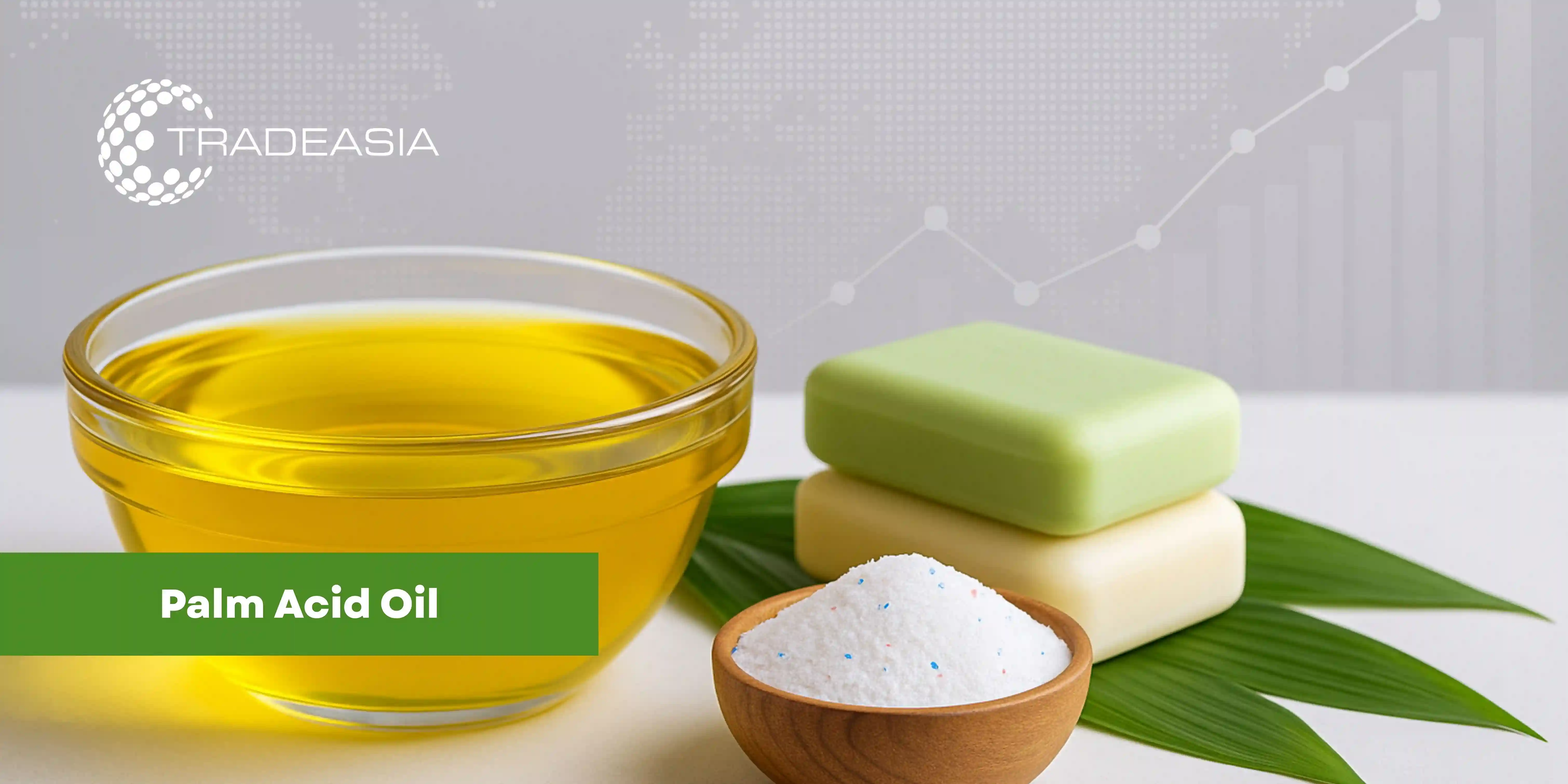Introduction to Palm Kernel Diethanolamide (PKDE)
Palm Kernel Diethanolamide (PKDE) is a non-ionic surfactant derived from palm kernel oil and diethanolamine. Known for its excellent foaming, emulsifying, and thickening properties, PKDE has become a crucial additive in the global chemical industry. Its versatility makes it valuable in various industries including detergents, cosmetics, personal care, and industrial cleaners.
In recent years, PKDE has gained significant traction due to its balance of cost-effectiveness and performance efficiency. Unlike synthetic surfactants derived from petroleum, PKDE is partly bio-based, which gives it an environmental advantage in a world that increasingly values sustainable solutions. This factor strengthens its position in both mature and emerging markets.
The period between 2025 and 2033 is expected to mark a strong expansion for PKDE, fueled by sustainability-driven consumer preferences, technological advancements in formulation science, and the growing demand for high-performance surfactants across multiple industries.
Global Applications of PKDE in Industry
The detergent and household cleaning sector is the largest consumer of PKDE. Its superior foaming and thickening characteristics make it an essential component in shampoos, dishwashing liquids, and laundry detergents. With rising global hygiene awareness post-pandemic, this segment is expected to continue driving demand.
In the personal care and cosmetics sector, PKDE serves as a foam booster and viscosity modifier. Its mildness compared to harsher surfactants makes it suitable for skin-friendly formulations like face washes, body washes, and baby care products. The global beauty industry’s focus on natural and sustainable ingredients positions PKDE as a preferred additive.
The industrial and institutional cleaning sector also contributes significantly. PKDE is used in car wash shampoos, industrial degreasers, and multipurpose cleaners due to its excellent foam stability and grease-cutting efficiency. As industries worldwide adopt greener cleaning solutions, PKDE finds more opportunities in this segment.
Market Trends and Growth Drivers (2025–2033)
One of the key global trends driving PKDE demand is the shift toward bio-based surfactants. With sustainability becoming a core pillar in corporate strategies, PKDE stands out as a semi-natural alternative to petroleum-based surfactants, aligning with consumer and regulatory preferences.
Another major driver is the expansion of the global personal care industry, particularly in emerging markets. Rising disposable incomes and changing lifestyles are fueling demand for shampoos, body washes, and specialty cosmetics. Since PKDE plays a vital role in these formulations, its consumption is directly tied to this growth.
Lastly, the industrial cleaning sector’s transition to safer chemicals is creating new opportunities. Stricter regulations on harmful surfactants in Europe and North America are boosting PKDE adoption, while Asia-Pacific markets see it as a cost-effective yet efficient choice. These combined trends signal sustained growth potential through 2033.
Regional Market Insights and Trade Dynamics
The Asia-Pacific region dominates global PKDE production and consumption. With abundant palm oil resources in Indonesia and Malaysia, the region benefits from cost advantages and strong supply chains. Rapid urbanization and increasing consumption of household cleaners in India, China, and Southeast Asia further fuel demand.
Europe is driven by sustainability mandates and consumer preference for natural surfactants. PKDE adoption is growing in eco-friendly detergent and cosmetic formulations, especially in Germany, France, and Scandinavia, where environmental awareness is highest. The region is also leading in R&D for greener chemical formulations.
Meanwhile, North America continues to present lucrative opportunities, supported by its robust personal care market and industrial cleaning demand. Regulatory pressure to phase out environmentally harmful surfactants strengthens the market for PKDE as a safer alternative. Cross-border trade dynamics also benefit from strong partnerships with Asian suppliers.
Opportunities for Innovation in PKDE Market
The demand for sustainable and bio-based surfactants creates opportunities for innovation in PKDE formulations. Companies are investing in developing palm kernel diethanolamide blends with enhanced biodegradability and reduced environmental footprint, targeting eco-conscious consumers.
Another growth area is specialty personal care products, where PKDE can be used in high-end formulations for sensitive skin and organic beauty lines. By innovating around mildness, texture, and stability, manufacturers can differentiate their offerings in the competitive cosmetics market.
Digital transformation in the chemical trade also presents an opportunity. With e-commerce and B2B platforms expanding, PKDE producers can directly reach global buyers. Streamlined trade mechanisms enable suppliers to tap into emerging markets, increasing efficiency and reducing costs.
Challenges Facing the PKDE Market
Despite strong prospects, the PKDE market faces challenges such as raw material price volatility. Palm oil prices are subject to fluctuations due to climate conditions, geopolitical issues, and sustainability debates. This volatility affects PKDE production costs and market stability.
The industry also faces regulatory challenges, particularly concerning diethanolamine derivatives. While PKDE is widely used, concerns about toxicity in certain applications have led to stricter compliance requirements in markets like Europe. Manufacturers must adapt by improving safety standards and certifications.
Finally, competition from alternative surfactants is a significant barrier. Products like sodium lauryl ether sulfate (SLES) and cocamidopropyl betaine (CAPB) sometimes replace PKDE in formulations. To remain competitive, the PKDE industry must emphasize its unique balance of performance, cost, and sustainability.
Global Market Forecast 2025–2033
The global PKDE market is projected to grow at a steady CAGR of 4–5% between 2025 and 2033. Household cleaning, personal care, and industrial applications will remain the leading demand drivers, with Asia-Pacific retaining the largest market share.
North America and Europe will see moderate but consistent growth, fueled by regulatory shifts and sustainability trends. Companies in these regions are likely to increase imports from Asia, strengthening international trade flows.
Emerging markets in Latin America and Africa present untapped opportunities. Rising middle-class populations and expanding industrial infrastructure will generate new demand for PKDE-based products. Producers who strategically expand into these regions may capture significant market share.
Conclusion
Palm Kernel Diethanolamide stands at the intersection of sustainability, performance, and affordability in the global surfactant market. Its applications across household cleaning, personal care, and industrial products make it a resilient and growing segment.
The forecast for 2025–2033 suggests a steady growth trajectory, supported by global sustainability initiatives, increased hygiene awareness, and technological innovation in formulations. Despite challenges such as raw material volatility and regulatory hurdles, opportunities far outweigh risks.
As the global chemical industry shifts toward greener alternatives, PKDE will continue to serve as a key ingredient shaping the next decade of the surfactant market. Strategic investments in innovation, trade expansion, and sustainability practices will define market leaders through 2033. For more details or to connect with reliable suppliers of detergent and surfactant solutions, you can reach us through our contact page
References


Leave a Comment